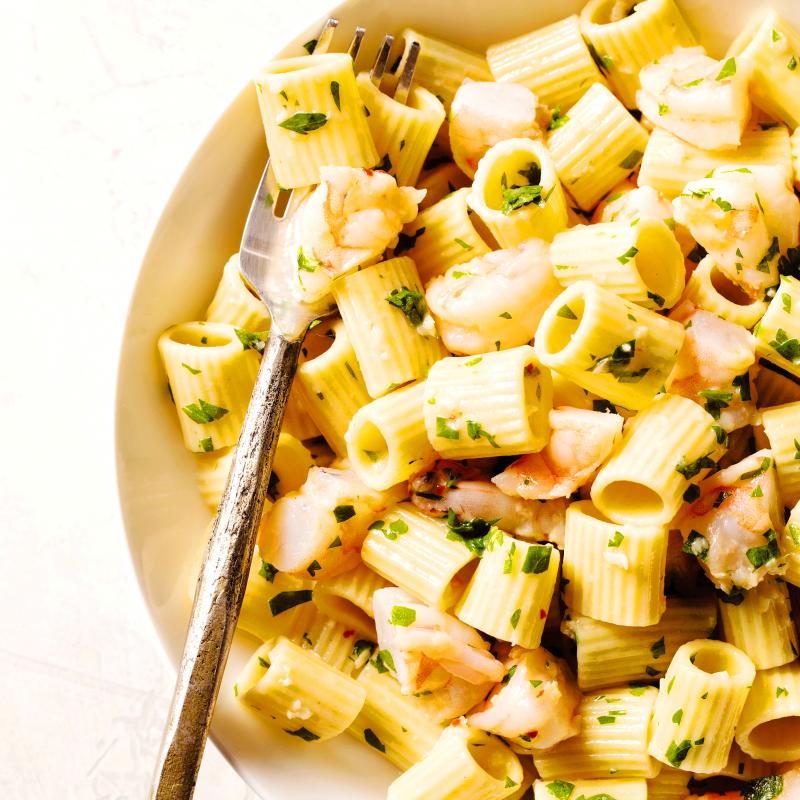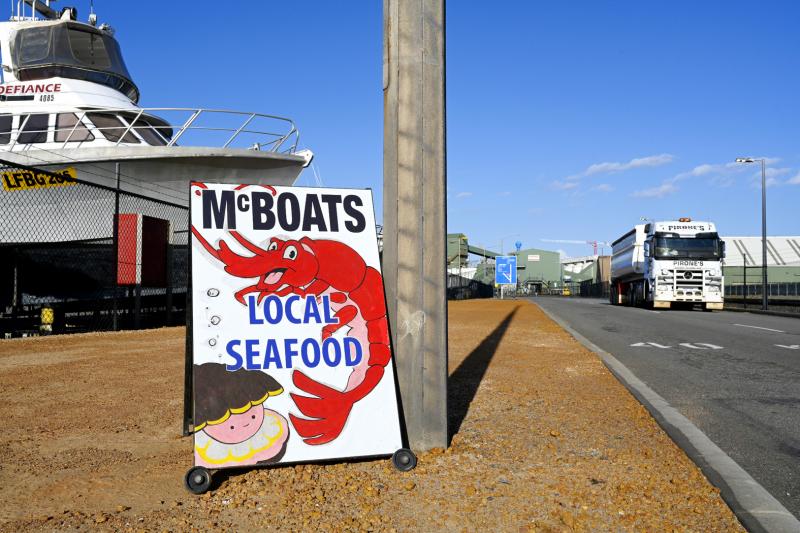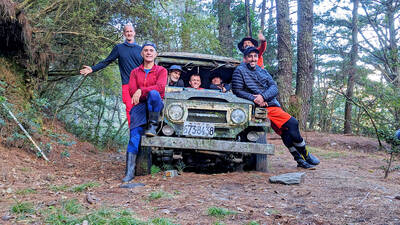Captain Wynn Gale — a fifth-generation Georgia shrimper — is on the side of the road on an April morning, selling shrimp at the same street corner where his dad sold shrimp.
“How’s the pandemic treating you?” I ask.
“Sales have dropped off by about two-thirds. No out-of-towners coming through on the I-95. No local traffic.” He sighs. “I’m going to tough it out. I can survive with what I’m selling. But that’s all I’m doing. Most shrimpers don’t have 401k retirement plans, you know?”

Photo: AP
Gale would rather be out on his boat, a 1953 trawler he had for nine years but recently sold to a man in North Carolina.
“It made me good money, but I couldn’t find a crew! You just can’t find anyone who wants to work shrimp boats any more. Most of ‘em are on drugs. Give ‘em a check and they’re gone.” He has a small boat he can run himself now.
In the past, shrimping was an admirable vocation. Gale first got out on a shrimp boat when he was 12.

Photo: AP
“Mama wouldn’t let me go any earlier, but from 12 years on out — every weekend I wasn’t in school or summer vacation I was on a shrimp boat.”
He spent the next 20 years learning from his dad, who shrimped for 45 years.
“What was an average day like?”

Photo: Bloomberg
“I’d leave about 4:30 in the morning and get to the dragging grounds about 6:30, maybe 7am. I’d put out in daylight, make three or four drags that day. The latest I’d be out would be 4pm,” he says.
“Look,” he tells me. “What I’m doing right here, right now, selling shrimp on this corner — it sucks. It’s way better out there on the water. It’s where I’ve lived all my life. If I wasn’t in the ocean, I was in the river running trout lines and catching catfish, or fishing for shad in winter.”
SHRIMP LOVERS
Americans eat more shrimp than ever — an average of 4.4lbs (2kg) per person — but not all of America’s shrimpers are thriving. Nearly 90 percent of America’s shrimp comes from overseas, farmed in Asia and Central America, where working conditions and meat quality can be repugnant. It is increasingly rare for fresh, wild-caught, chemical-free shrimp to reach an American consumer’s plate.
Off the coast of Georgia, fishermen harvested about 2.61 million pounds of shrimp last year, a haul valued more than US$11 million. Shrimping is deeply ingrained in culture there, but Georgia’s fishermen are facing significant challenges: an aging workforce, low prices per pound, climate change and black gill disease, leading many to wonder if the industry will survive.
These days, depending on the season, Gale can get US$3 to US$5.50 per lb of shrimp.
“Back in the 1980s and 1990s,” he says, “we were selling the same size shrimp for US$8 a pound. We have good years — but most of the time we have bad years now.”
Bryan Fluech, the associate marine extension director at Marine Extension and Georgia Sea Grant, uses the term “graying of the fleet” when talking about the future of shrimping in Georgia.
“Shrimp are the Cheetos of the sea,” Fluech tells me. “Everything eats them. But people need to remember: that shrimp didn’t just show up in a Publix.”
“The decline of the shrimping industry has been death by a thousand cuts,” Fluech says. “The cost for maintaining a boat is up, and the boats are getting older. Sustainable fishing practices are expensive to implement. The younger generation doesn’t want to work on a shrimping vessel, and captains tell me they can’t find a reliable workforce. The cost of ice and fuel might rise, but the profit on shrimp doesn’t. Plus, our guys are competing with foreign markets.”
“A lot has changed,” Gale tells me. “We’re losing our infrastructure. Lost our big block ice plant that had given ice since the 1940s. Can’t hardly find anybody to build nets any more.”
Fluech professes enormous respect for the shrimpers still operating in Georgia’s waters.
“Let me tell you — MacGyver [the TV adventurer hero] has nothing on Georgia shrimpers. They are so resourceful. You can’t just be a good shrimper any more. You’ve got to be a welder, a businessman and a direct marketer too.”
“People love to say that they’re all about local food,” Fluech adds. “And you’ll see a shrimping boat on every tourism brochure, but commercial waterfronts have changed. People don’t like the look of a working dock. There’s only one left in Brunswick, which means the fishermen have to take those prices or go out on their own. We say we like authentic experiences, but we’re losing them.”
‘BLESSING OF THE FLEET’
You can see the old reverence for Georgia’s shrimpers in the Blessing of the Fleet ceremonies, which still happen along the coast in towns like Brunswick and Darien at the end of March, as the fleet readies itself for the season.
Ships with beautiful names like the Lady Raven, Flying Cloud, Bernice II, Liberty Bell and Sundown arrive at the ceremony decorated with lights and streamers. A crowd gathers, and a minister — often waving a toilet brush spray-painted gold, and flanked by the Knights of Columbus — offers a blessing into the microphone. Shrimping is a dangerous vocation, after all, and every year there are injuries, drownings and boats that don’t return.
This year’s ceremony was postponed due to the pandemic. The cancellation feels like the latest knock in a long and difficult fight.
Once celebrated, many shrimpers feel vilified as they face mounting regulations aimed at preserving other species, like sea turtles. In the 1980s, before turtle excluder devices (TEDs) were prevalent, shrimp nets were responsible for more than 10,000 sea turtle deaths annually in the southeast. In 1989, when regulations tightened, shrimpers created a 500-boat blockade in the Gulf coast, raising skull and crossbones flags and even ramming Coast Guard ships.
SCIENTISTS AND SHRIMPERS
In Georgia, tension between scientists and fishermen is amplified by black gill disease, which affects a shrimp’s respiratory system. The shrimp’s immune response causes the visible blackening of the gills, and results in lethargy, potential death and sometimes the collapse of an entire fishery.
Black gill is an expensive problem. The commerce department last year distributed over US$1 million to commercial shrimpers and researchers because of the 2013 white shrimp fishery failure.
Black gill is, however, more pervasive than ever. Gale reports that it’s starting earlier in the year, beginning in May instead of August, and continuing throughout fall. Though it has been around since the 1990s, researchers believe the disease is worsening with climate change.
Climate change will continue to wreak further havoc on the industry — changing the salinity of the water, shifting the distribution of shrimp — female shrimp need colder water to spawn. Warmer winters appear to predict a smaller annual shrimp harvest, and may not kill the bacteria responsible for black gill.
Keeping shrimp fisheries healthy, and livelihoods possible, requires intense collaboration between fishermen and scientists. Otherwise, foreign markets with cheap labor and unsustainable practices will take over the market share entirely.
“We have to look for the cooperative path,” Fluech says, emphasizing how helpful it can be when shrimpers help with data collection and reporting. He currently works with five to eight shrimpers each season; the fishermen help report black gill using an online tracking app.
One of the best historic examples of this cooperative path is fisherman Sinkey Boone , who hailed from a long line of shrimpers in Darien. Boone created the first turtle excluder device in the late 1960s, called the Georgia Jumper, which allowed turtles — an oxygen-breathing species — to escape trawler nets so they wouldn’t drown.
Scientists and fishermen may seem at odds, but collaboration is possible, and perhaps imperative.
“Me and the shrimpers may not agree on everything, but I respect the hell out of them,” says Fluech.
WORK TILL YOU DIE
Gale agrees with the saying that shrimpers never retire.
“We fish till we fall out and die,” he says. “I’ve seen men fish right on until their 80s and 90s. I know an old man right now who’s got to be 85 and he outworks anybody I know — still climbs up in the rigging. Diabetic and still goes.”
I hear stories about poisonous snakes tangled in anchor lines, boats on fire, near-sinkings and a man in his 70s impaled by his own equipment who hardly survived, but broke out of the hospital to get back on his boat a few days later.
“Once fishing’s in your blood, and you get used to it, you just don’t want to do anything else,” Gale says.
“I’d still work for my daddy,” Gale tells me. “He just knew where the shrimp would be — it was absolutely amazing. He knew the tide cycles, what the weather meant. You could set your watch to it. Another fisherman could make that same pass and miss them.”
In 1979, the government issued 1,471 commercial trawling licenses in Georgia — but only 253 in 2014. If the decline in Georgia’s shrimping continues, the ripple effect will be felt in the local economy, on dinner plates, during seasonal festivals and on the horizon line, where many are used to seeing early morning trawlers. Frozen foreign shrimp and farmed shrimp — known as aquaculture — are the likely future.
“Do I think there will always be shrimpers in Georgia?” Fluech asks me. “I hope so. You have to be an eternal optimist in this business.”

The year was 1991. A Toyota Land Cruiser set out on a 67km journey up the Junda Forest Road (郡大林道) toward an old loggers’ camp, at which point the hikers inside would get out and begin their ascent of Jade Mountain (玉山). Little did they know, they would be the last group of hikers to ever enjoy this shortcut into the mountains. An approaching typhoon soon wiped out the road behind them, trapping the vehicle on the mountain and forever changing the approach to Jade Mountain. THE CONTEMPORARY ROUTE Nowadays, the approach to Jade Mountain from the north side takes an

Last week Joseph Nye, the well-known China scholar, wrote on the Australian Strategic Policy Institute’s website about how war over Taiwan might be averted. He noted that years ago he was on a team that met with then-president Chen Shui-bian (陳水扁), “whose previous ‘unofficial’ visit to the US had caused a crisis in which China fired missiles into the sea and the US deployed carriers off the coast of Taiwan.” Yes, that’s right, mighty Chen caused that crisis all by himself. Neither the US nor the People’s Republic of China (PRC) exercised any agency. Nye then nostalgically invoked the comical specter

Relations between Taiwan and the Czech Republic have flourished in recent years. However, not everyone is pleased about the growing friendship between the two countries. Last month, an incident involving a Chinese diplomat tailing the car of vice president-elect Hsiao Bi-khim (蕭美琴) in Prague, drew public attention to the People’s Republic of China’s (PRC) operations to undermine Taiwan overseas. The trip was not Hsiao’s first visit to the Central European country. It was meant to be low-key, a chance to meet with local academics and politicians, until her police escort noticed a car was tailing her through the Czech capital. The

April 15 to April 21 Yang Kui (楊逵) was horrified as he drove past trucks, oxcarts and trolleys loaded with coffins on his way to Tuntzechiao (屯子腳), which he heard had been completely destroyed. The friend he came to check on was safe, but most residents were suffering in the town hit the hardest by the 7.1-magnitude Hsinchu-Taichung Earthquake on April 21, 1935. It remains the deadliest in Taiwan’s recorded history, claiming around 3,300 lives and injuring nearly 12,000. The disaster completely flattened roughly 18,000 houses and damaged countless more. The social activist and